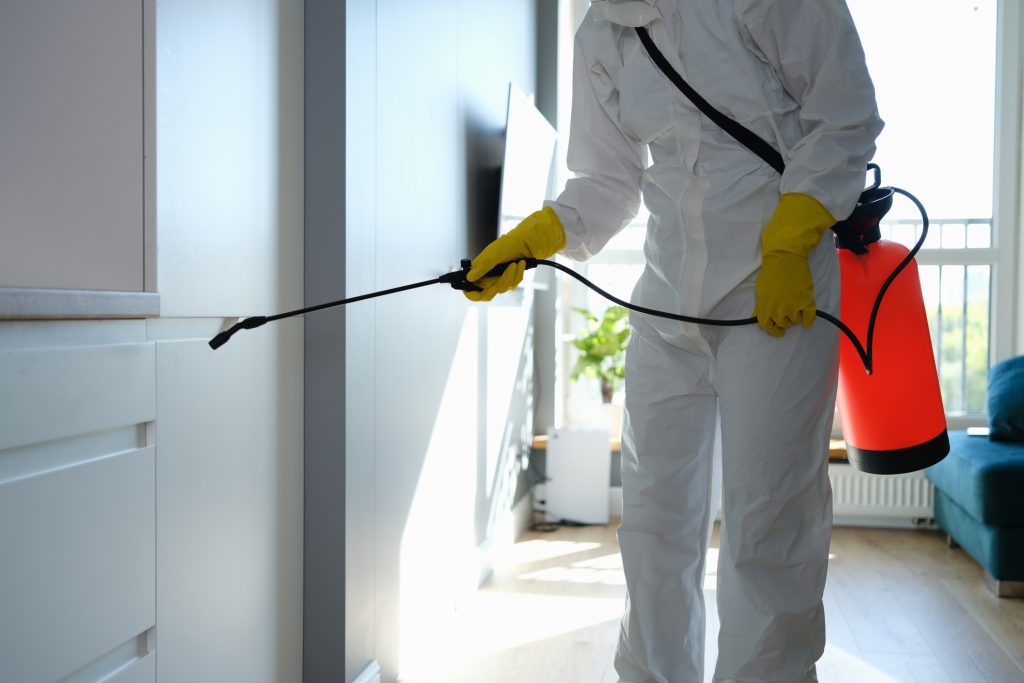Enjoy top-rated Pest Control for reliable pest prevention and peace of mind.
Eco-Friendly Insect Control Approaches for Taking Care Of Wildlife in Urban Locations
Urban areas commonly locate themselves at the intersection of human activity and wild animals, leading to one-of-a-kind obstacles in parasite management. These methods not just protect the atmosphere yet also enhance neighborhood engagement in wild animals administration. As city populations continue to expand, recognizing the characteristics of wild animals communications becomes significantly essential.
Understanding Urban Wildlife Characteristics
Recognizing Urban Wildlife Dynamics is essential for developing reliable and environmentally friendly pest control approaches. Urban locations are increasingly coming to be habitats for various wild animals species, driven by variables such as habitat fragmentation, food availability, and human advancement. Acknowledging these characteristics permits a nuanced method to pest administration that lines up with environmental concepts.
Urban wild animals frequently includes types such as raccoons, squirrels, and birds, which adjust to city atmospheres, discovering niches in eco-friendly areas, parks, and even residential locations. Their existence can cause conflicts with human beings, particularly when they manipulate personnels for food and sanctuary. Recognizing the habits and eco-friendly duties of these types notifies methods that reduce unfavorable interactions while advertising biodiversity.
Furthermore, acknowledging the interdependencies within city environments aids in recognizing crucial areas for environment preservation and repair. This knowledge adds to the development of integrated parasite administration (IPM) techniques that take into consideration the eco-friendly balance, thus minimizing dependence on harmful chemicals. By fostering coexistence in between human beings and urban wildlife, cities can produce healthier settings that profit both locals and local environments, leading the way for sustainable metropolitan living.
All-natural Repellents and Deterrents
Natural repellents and deterrents use a lasting alternative to conventional pest control techniques by harnessing the power of nature to maintain undesirable varieties away. These environmentally friendly options generally utilize plant-based ingredients, vital oils, and other normally taking place substances that discourage bugs without damaging the setting.
One efficient natural repellent is peppermint oil, which is known to fend off rodents and insects. Its strong scent is undesirable to several parasites, making it a preferred option for urban setups. In a similar way, vinegar and citrus peels can act as deterrents, as their solid smells are usually uninviting to numerous wildlife.
Additionally, diatomaceous earth is a natural powder that can be spread in areas susceptible to insect task, successfully drying out and preventing insects without positioning threats to non-target species. Garlic sprays and neem oil are recognized for their ability to repel a broad variety of parasites, including both pests and bigger wild animals.
Implementing these natural repellents not only minimizes reliance on chemical pesticides however likewise advertises a much healthier metropolitan ecosystem, promoting a more balanced conjunction between people and wild animals. By utilizing these techniques, city areas can successfully take care of pest populaces while lessening environmental influence.
Environment Modification Methods
Effective environment modification techniques play a critical role in sustainable parasite management by altering the atmosphere to make it much less helpful to pest infestations. By understanding the environmental characteristics of city locations, homeowner can execute calculated modifications that discourage parasites while promoting biodiversity.
(Honey Bee Relocation)One main method includes keeping appropriate cleanliness. This includes routine waste elimination, securing trash can, and eliminating standing water to decrease reproducing sites for bugs and rats. Additionally, landscape design practices such as selecting indigenous plants can boost environmental balance, giving habitats for valuable organisms while decreasing resources for pests.
One more vital technique is to seal entry factors in structures. Examining and fixing cracks in foundations, walls, and windows can considerably reduce insect gain access to. Producing physical obstacles, such as fences or plant barriers, can hinder wild animals activity right into human-inhabited areas.
Integrated Insect Monitoring Practices
Structure upon environment modification techniques, integrated insect administration (IPM) techniques use an all natural strategy to controlling parasite populations while reducing environmental influence. IPM combines various strategies, consisting of organic, cultural, mechanical, and chemical controls, to accomplish efficient parasite monitoring.
Biological control entails the intro of natural predators or bloodsuckers to decrease parasite populations. Social practices, such as plant rotation and cleanliness, disrupt pest life process and decrease their environments - Pest Control. Mechanical controls, like traps and obstacles, give prompt remedy for insect stress without chemical treatment
Chemical controls are used as a last hope, concentrating on targeted applications that restrict harm to non-target species and the atmosphere. The choice of eco-friendly pesticides, when needed, is essential to the IPM structure. In addition, keeping track of parasite populaces and assessing potential damages assists educate decision-making, making sure that treatments are timely and efficient.
Neighborhood Participation and Education

(Pest Control in Port Charlotte)Workshops and informational sessions can gear up locals with understanding concerning indigenous species, habitat conservation, and efficient non-toxic bug monitoring strategies. Cooperation with schools, neighborhood companies, and government agencies better improves instructional outreach, making certain that vital information gets to diverse audiences.
Furthermore, community-led initiatives, such as neighborhood clean-up days and environment repair jobs, not only advertise biodiversity but likewise enhance neighborhood ties. Pest Control. By motivating citizens to share their experiences and monitorings, areas can create targeted techniques that attend to specific regional insect problems
Incorporating responses from locals into parasite management plans makes it possible for an extra receptive and flexible approach to wildlife challenges. Eventually, notified and engaged communities are crucial to attaining long-term success in green pest control, leading to much healthier metropolitan environments that appreciate both human and eco-friendly demands.

Verdict
In verdict, eco-friendly insect control comes close to deal lasting options for managing urban wildlife. By prioritizing habitat adjustment, making use of all-natural repellents, and carrying out integrated bug administration techniques, neighborhoods can cultivate a harmonious conjunction with regional animals.